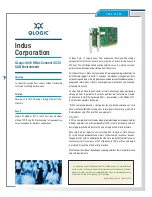
3 Linux environments
Included:
• Installation Requirements
• Downloading and installing the driver and utilities
• Adding a file system, formatting, and performing multi-disk configuration
• Using the Logical Volume Manager
• Configuring RAID
• Upgrading firmware
• Upgrading the driver
• Unmanaged Shutdown Issues
• Exploring IO Accelerator Linux Driver Loading
• Linux installation of Simple Network Management Protocol (SNMP)
Installation Requirements
The HP-provided Linux installers for the IO Accelerator do not contain binary driver modules. Instead,
they build the binary driver RPMs specific to the active Linux kernel by using a source RPM for the
driver and compiler/build tools. This allows for the use of customized kernels, but does place additional
requirements on the system used for initial installation (e.g. the 'build' system). After performing an
installation on the 'build' system, the binary driver RPM can then be deployed to other systems without
having to rebuild it.
The base modules required for the build system are summarized in the following table:
Requirements
Distro
kernel (x86-64), kernel-devel (x86-64), rpm-build, rsync, redhat-lsb, gcc,
dialog
RHEL4
kernel (x86-64), kernel-devel (x86-64), rpm-build, rsync, redhat-lsb, gcc,
dialog
RHEL5
kernel-smp, kernel-source, rsync, lsb, gcc, dialog
SLES10
kernel-smp, kernel-source, rsync, lsb, gcc, dialog
SLES11
These modules may have other dependencies that will be installed automatically assuming you are
using some type of package manager/installer. The kernel-level (for RHEL4 and RHEL5) and
kernel-source (for SLES10 & SLES11) modules must match the kernel version in use.
Downloading and installing the driver and utilities
Two methods are available for installing the driver and utilities.
IO Accelerator for BladeSystem c-Class user guide
15
Содержание AJ878A - StorageWorks 320 GB Hard Drive
Страница 14: ...Hardware installation 14 ...
Страница 52: ...HP IO Accelerator Management Tool 52 ...
















































